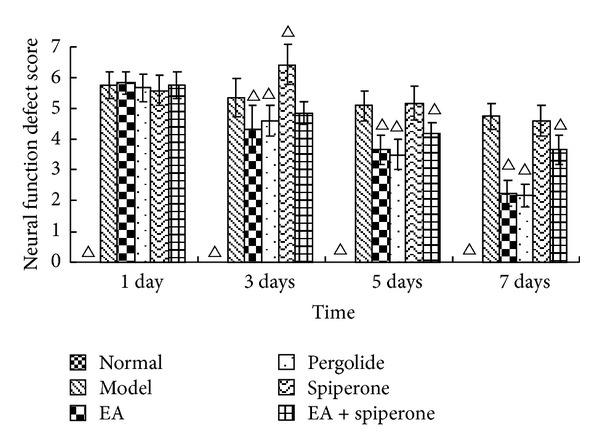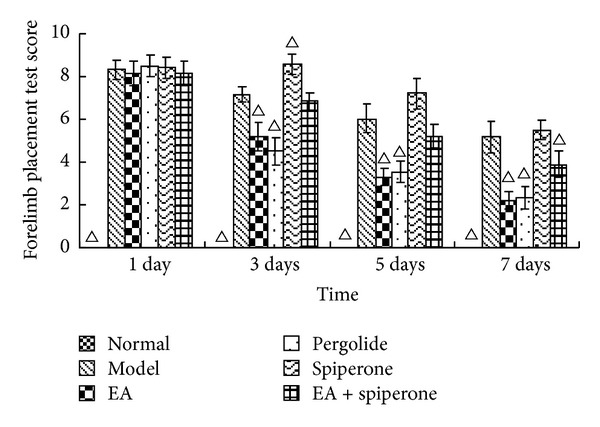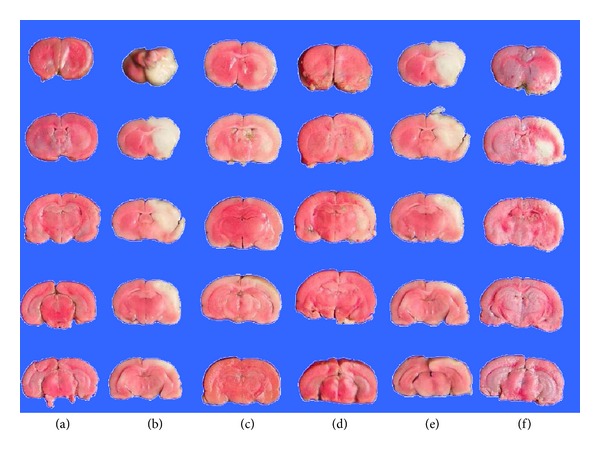
| Size | Price | Stock | Qty |
|---|---|---|---|
| 5mg |
|
||
| 10mg |
|
||
| 25mg |
|
||
| 50mg |
|
||
| 100mg |
|
||
| 250mg |
|
||
| 500mg |
|
||
| Other Sizes |
|
Purity: ≥98%
Pergolide Mesylate (Permax; Pergotoliderived; LY127809; LY-127809), the mesylate salt of Pergolide, is a novel and potent antiparkinsonian agent which acts as a dopaminergic agonist. It is used to treat Parkinson's disease in certain nations. The dopamine D2, D1, and serotonin 5-HT1A, 5-HT1B, 5-HT2A, 5-HT2B, and 5-HT2C receptors are all agonist-activated by pergolide mesylate. It might also, like cabergoline, have agonist activity at other dopamine receptor subtypes.
| Targets |
D2 receptor; D1 Receptor
|
|
|---|---|---|
| ln Vitro |
|
|
| ln Vivo |
|
|
| Cell Assay |
Cell Line: SH-SY5Y cells
Concentration: 0.01 μM, 0.1 μM, 0.5 μM, 1 μM, 5 μM, 10 μM, 50 μM Incubation Time: Pretreated for 2 hours Result: Dose-dependently inhibited H2O2-induced cell death in SH-SY5Y neuroblastoma cells. |
|
| Animal Protocol |
Wistar rats (200-250 g) induced with 6-hydroxydopamine (6-OHDA)
0.3 mg/kg Intraperitoneal injection; daily; 11 days |
|
| References |
|
|
| Additional Infomation |
Pergolide mesylate is a methanesulfonate salt obtained from pergolide by mixing eqimolar amount of pergolide and methanesulfonic acid. A dopamine D2 receptor agonist which also has D1 and D2 agonist properties, it is used in the management of Parkinson's disease, although it was withdrawn from the U.S. and Canadian markets in 2007 due to an increased risk of cardiac valve dysfunction. It has a role as an antiparkinson drug, a dopamine agonist and a geroprotector. It contains a pergolide(1+).
Pergolide Mesylate is a semi-synthetic ergot derivative and a dopamine agonist with antiparkinson property. Pergolide mesylate binds to and activates dopamine receptor subtypes D1 and D2, resulting in prolactin secretion inhibition, transient increase in serum concentration of growth hormone, and decrease in serum concentration of luteinizing hormone. Direct stimulation of postsynaptic dopamine receptors in the nigrostriatal system, may account for this agent's antiparkinson activity. A long-acting dopamine agonist which has been used to treat PARKINSON DISEASE and HYPERPROLACTINEMIA but withdrawn from some markets due to potential for HEART VALVE DISEASES. See also: Pergolide (has active moiety). |
| Molecular Formula |
C20H30N2O3S2
|
|
|---|---|---|
| Molecular Weight |
410.59
|
|
| Exact Mass |
410.169
|
|
| Elemental Analysis |
C, 58.51; H, 7.36; N, 6.82; O, 11.69; S, 15.62
|
|
| CAS # |
66104-23-2
|
|
| Related CAS # |
Pergolide; 66104-22-1; Pergolide-d7 mesylate
|
|
| PubChem CID |
47812
|
|
| Appearance |
Solid powder
|
|
| Boiling Point |
491.3ºC at 760 mmHg
|
|
| Melting Point |
252-254°C
|
|
| Flash Point |
250.9ºC
|
|
| LogP |
4.793
|
|
| Hydrogen Bond Donor Count |
2
|
|
| Hydrogen Bond Acceptor Count |
5
|
|
| Rotatable Bond Count |
4
|
|
| Heavy Atom Count |
27
|
|
| Complexity |
480
|
|
| Defined Atom Stereocenter Count |
3
|
|
| SMILES |
[H][C@@]1(N(CCC)C[C@H](CSC)C[C@@]12[H])CC3=CNC4=CC=CC2=C43.CS(=O)(O)=O
|
|
| InChi Key |
UWCVGPLTGZWHGS-ZORIOUSZSA-N
|
|
| InChi Code |
InChI=1S/C19H26N2S.CH4O3S/c1-3-7-21-11-13(12-22-2)8-16-15-5-4-6-17-19(15)14(10-20-17)9-18(16)21;1-5(2,3)4/h4-6,10,13,16,18,20H,3,7-9,11-12H2,1-2H3;1H3,(H,2,3,4)/t13-,16-,18-;/m1./s1
|
|
| Chemical Name |
(6aR,9R,10aR)-9-(methylsulfanylmethyl)-7-propyl-6,6a,8,9,10,10a-hexahydro-4H-indolo[4,3-fg]quinoline;methanesulfonic acid
|
|
| Synonyms |
|
|
| HS Tariff Code |
2934.99.03.00
|
|
| Storage |
Powder -20°C 3 years 4°C 2 years In solvent -80°C 6 months -20°C 1 month Note: Please store this product in a sealed and protected environment, avoid exposure to moisture. |
|
| Shipping Condition |
Room temperature (This product is stable at ambient temperature for a few days during ordinary shipping and time spent in Customs)
|
| Solubility (In Vitro) |
|
|||
|---|---|---|---|---|
| Solubility (In Vivo) |
Solubility in Formulation 1: ≥ 2.08 mg/mL (5.07 mM) (saturation unknown) in 10% DMSO + 40% PEG300 + 5% Tween80 + 45% Saline (add these co-solvents sequentially from left to right, and one by one), clear solution.
For example, if 1 mL of working solution is to be prepared, you can add 100 μL of 20.8 mg/mL clear DMSO stock solution to 400 μL PEG300 and mix evenly; then add 50 μL Tween-80 to the above solution and mix evenly; then add 450 μL normal saline to adjust the volume to 1 mL. Preparation of saline: Dissolve 0.9 g of sodium chloride in 100 mL ddH₂ O to obtain a clear solution. Solubility in Formulation 2: ≥ 2.08 mg/mL (5.07 mM) (saturation unknown) in 10% DMSO + 90% (20% SBE-β-CD in Saline) (add these co-solvents sequentially from left to right, and one by one), clear solution. For example, if 1 mL of working solution is to be prepared, you can add 100 μL of 20.8 mg/mL clear DMSO stock solution to 900 μL of 20% SBE-β-CD physiological saline solution and mix evenly. Preparation of 20% SBE-β-CD in Saline (4°C,1 week): Dissolve 2 g SBE-β-CD in 10 mL saline to obtain a clear solution. View More
Solubility in Formulation 3: ≥ 2.08 mg/mL (5.07 mM) (saturation unknown) in 10% DMSO + 90% Corn Oil (add these co-solvents sequentially from left to right, and one by one), clear solution. |
| Preparing Stock Solutions | 1 mg | 5 mg | 10 mg | |
| 1 mM | 2.4355 mL | 12.1776 mL | 24.3552 mL | |
| 5 mM | 0.4871 mL | 2.4355 mL | 4.8710 mL | |
| 10 mM | 0.2436 mL | 1.2178 mL | 2.4355 mL |
*Note: Please select an appropriate solvent for the preparation of stock solution based on your experiment needs. For most products, DMSO can be used for preparing stock solutions (e.g. 5 mM, 10 mM, or 20 mM concentration); some products with high aqueous solubility may be dissolved in water directly. Solubility information is available at the above Solubility Data section. Once the stock solution is prepared, aliquot it to routine usage volumes and store at -20°C or -80°C. Avoid repeated freeze and thaw cycles.
Calculation results
Working concentration: mg/mL;
Method for preparing DMSO stock solution: mg drug pre-dissolved in μL DMSO (stock solution concentration mg/mL). Please contact us first if the concentration exceeds the DMSO solubility of the batch of drug.
Method for preparing in vivo formulation::Take μL DMSO stock solution, next add μL PEG300, mix and clarify, next addμL Tween 80, mix and clarify, next add μL ddH2O,mix and clarify.
(1) Please be sure that the solution is clear before the addition of next solvent. Dissolution methods like vortex, ultrasound or warming and heat may be used to aid dissolving.
(2) Be sure to add the solvent(s) in order.
| NCT Number | Recruitment | interventions | Conditions | Sponsor/Collaborators | Start Date | Phases |
| NCT01066403 | Completed | Drug: Pergolide | Schizophrenia | Heidelberg University | October 2003 | Not Applicable |
| NCT00000248 | Completed | Drug: Pergolide | Cocaine-Related Disorders | Medical University of South Carolina |
February 1996 | Phase 3 |
| NCT00004433 | Completed | Drug: pergolide | Tourette Syndrome | Children's Hospital Medical Center, Cincinnati |
December 1994 | Not Applicable |
| NCT00000215 | Completed | Drug: Pergolide | Cocaine-Related Disorders | National Institute on Drug Abuse (NIDA) |
December 2001 | Phase 2 |
| NCT00000269 | Completed | Drug: Pergolide | Cocaine-Related Disorders Substance-Related Disorders |
National Institute on Drug Abuse (NIDA) |
October 1995 | Phase 2 |
 |
|---|
 |
 |